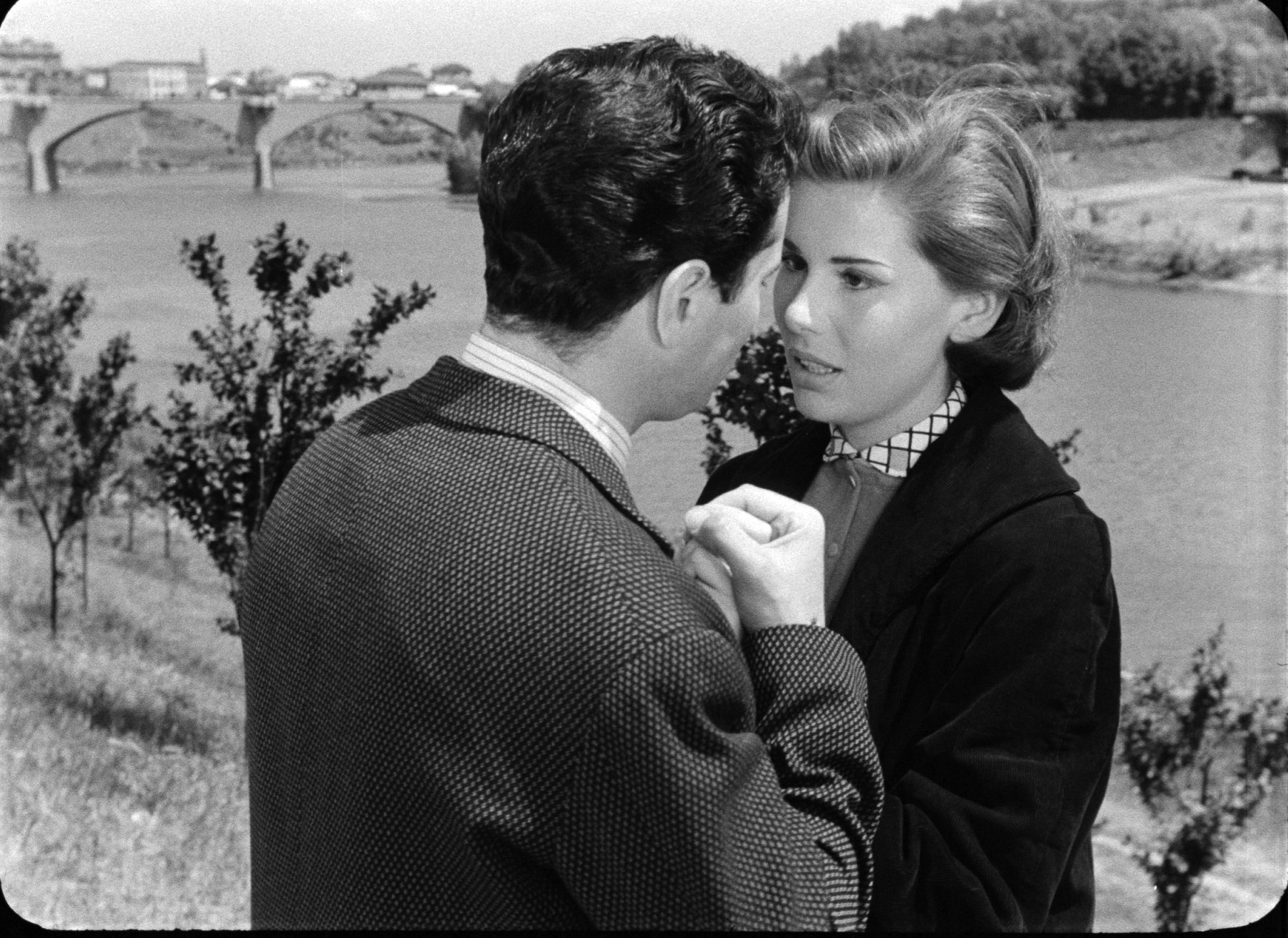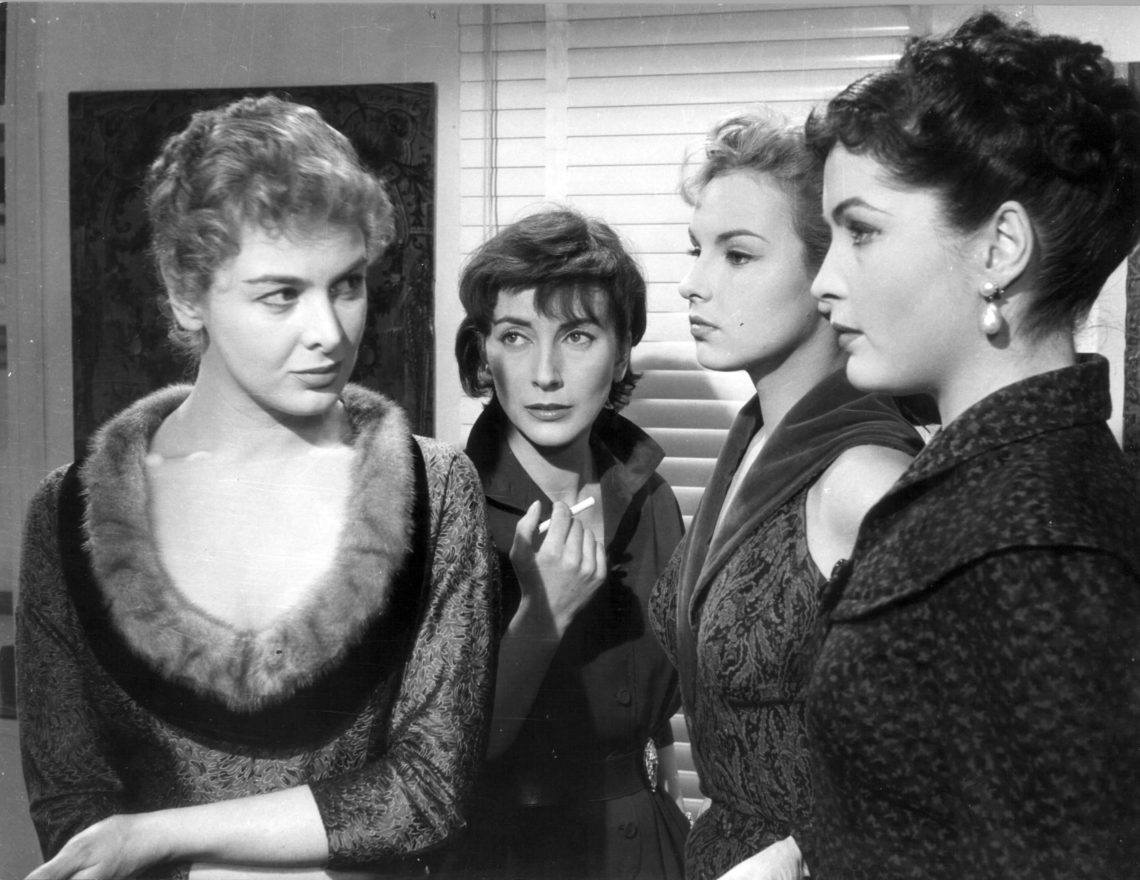An early melodrama by Michelangelo Antonioni, Le Amiche explores the relationship of a group of upper-class young women in Turin, Italy. The film explores a rising economic class within the country during the Italian Economic Miracle. Driven by boredom and loneliness, the women resort to cruelty and despair as they navigate a series of romantic entanglements: The women’s aimless desire a symbol of the spiritual poverty of the modern age. Rosetta, whose love affair is the centre of the film, has just tried to kill herself. Released from the hospital, her girlfriends bring her to the beach. Her friends gossip as they watch her wander by the cold shore. The wind blows, and they tightly grab their jackets. “What if she jumps in?” one friend asks. The spiteful Momina answers, “If she’ll throw herself in the ocean then she doesn’t deserve to live.” Lost in their cruelty they don’t notice that Rosetta is returning from the shore and is within earshot to hear Momina cackle that their suicidal friend “better kill herself for real this time because there’s nobody for her!”
Beginning with a career in documentary film and working within the neorealist tradition, Antonioni very quickly broke from the traditions of the movement due to his preference for abstracted realism and apprehension over the restrictive leftist ideological demands of the movement. His early films, including Le Amiche, draw on elements of the neo-realist aesthetic but are more philosophical than they are political. Antonioni drew ire from his contemporaries who felt he was too sympathetic to his middle and upper-class subjects, ignoring the plight of the impoverished and outcasted masses. Antonioni would later answer this saying, “Unlike early neorealist filmmakers, I am not trying to show reality, I am attempting to recreate realism.”
The landscape of Antonioni’s philosophical expression is the modern city. In Le Amiche, this expression is nascent, with the cityscape an integral figure in the film, but still only hinting at the expressions of paranoia and alienation that would later emerge in L’Avventura and L’Eclisse. The obsessive note of the women’s emotions runs starkly against the coldness of the city. Antonioni would later tune his character’s aloofness to reflect his landscapes better, their alienation both a symptom and a cause of the modern facades of the Economic Miracle. Drawing on Jean-Paul Sartre’s writings on the collective, Antonioni’s women, through the “medium of the city,” are both an invisible presence and an integrated one. Le Amiche approaches this ideal, but the women’s emotions render them a little too tumultuous to reflect completely the growing modernity of Turin. The trappings of melodrama are visceral but ultimately in conflict with the concept of the contemporary metropolis as isolating.

Turin was one of the fastest growing cities in Italy during the post-war period and contributed substantially to the country’s quick economic growth during the 1950s and 1960s. Being the heart of the Italian automotive industry, the city drew in hundreds of thousands of immigrants during this period, and the atmosphere of transients and transformation sets the atmosphere in Le Amiche. When the titular girlfriends are not attending cocktail parties or playing by the shore, they’re in the streets, their isolated and beautiful figures contrasted against a naked landscape populated by quickly erected modern apartment buildings that tower above dust roads. Built literally from the rubble of a city destroyed during the war, the buildings seem as alienated and isolated as the people who inhabit the city.
Antonioni’s craft lies meaningfully in the blocking of characters within space. He uses landscape, whether architectural or natural, to entrap characters. By the beach, framed by the ocean, the women crowd the frame as if to keep warm—but notably their eyelines rarely meet. They are grouped together, but notably apart from each other. Within that same sequence, characters are similarly presented in different planes of view, each maintaining a different emotional trajectory: heartbroken Rosetta lies in the foreground, a diminutive and worried Nene is almost out of frame in the mid-ground, and the longing Lorenzo remains in the distance; all three are overwhelmed by the size and power of the crashing waves. People don’t exist independently of the space they are in, but rather, integrated within it. Antonioni mines their movement and blocking for as much philosophical and emotional meaning as possible.
The intertwining mysteries, contrasting pillars of the old and new world, and the omnipresence of an unfriendly sea feed into a similarly haunted atmosphere, contributing to an internalized version of reality overcome by boredom and alienation. The mystery of Rosetta’s suicide attempt hangs over the film; the obvious answer seems to be a man, but the lack of resolution—the unknowability of another person’s inner world—feeds into a toxic atmosphere of isolation and ennui. While Rosetta herself says that, yes, in part her attempt to take her life was because of a man, she has become equally consumed by the pointlessness of her existence. “Why should I live? To decide what kind of dress to wear? And when I’ve decided? What’s waiting for me?” The modern world offers no consolation for Antonioni’s lonely women, they are beautiful to be sure, but their existence especially meaningless for it.

















